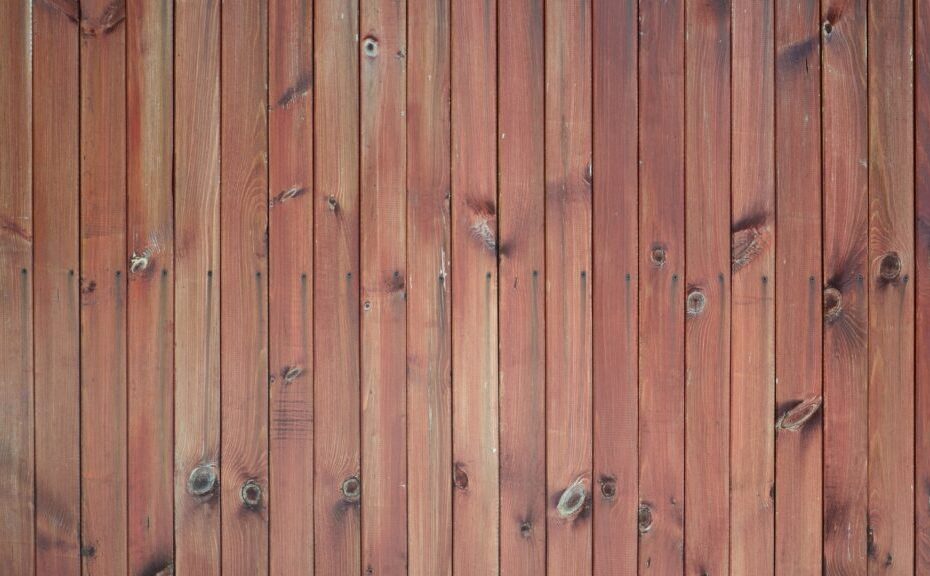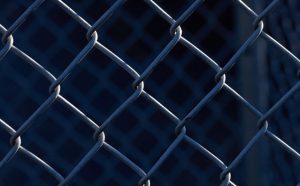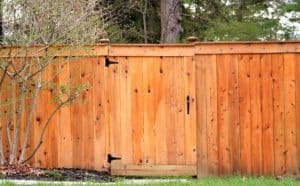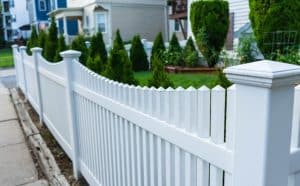If you’re considering a wooden fence for your property in Southwest Missouri, Southeast Kansas, Northeast Oklahoma, or Northwest Arkansas, you’re probably wondering: “How long will this investment actually last?”
It’s a fair question, especially when considering the cost of several thousand dollars for fencing. The truth is, wooden fences in the Four States region face some unique challenges that can significantly impact their lifespan—but with the right knowledge and approach, you can maximize your fence’s durability and get the most value from your investment.
Here’s how the Four States region impacts fence longevity:
- High humidity levels that promote wood decay
- Severe weather events, including tornadoes, hail, and ice storms
- Temperature swings from below freezing to over 100°F
- Clay soil conditions that affect drainage and post-stability
- Specific pest populations that target wooden structures
This guide will give you the straight facts about wooden fence longevity in our region, helping you make informed decisions about materials, maintenance, and expectations. Whether you’re planning your first fence or replacing an aging one, understanding these regional factors can save you money and frustration down the road.
Average Lifespan of Wooden Fences in the Four States
- Average Lifespan of Wooden Fences: 7-10 years
- Well-Maintained Wooden Fences: 10-15 years with timely stain/sealant applications, regular inspections, and immediate storm damage repairs.
- Neglected Wooden Fences: 5-10 years, as they are more vulnerable to extreme conditions.
What Affects These Numbers?
Factors that extend lifespan:
- Quality wood selection (cedar, redwood, or properly treated pine)
- Professional installation with proper post depth and drainage
- Regular maintenance schedule adapted to our climate
- Prompt storm damage repairs
- Appropriate spacing for humidity and airflow
Factors that shorten lifespan:
- Untreated or low-quality lumber
- Poor installation practices
- Deferred maintenance
- Inadequate drainage around posts
- Exposure to standing water or poor air circulation
The Bottom Line for Four States Homeowners
Expect a well-maintained wooden fence to last at least a decade in our region with proper care. This is slightly shorter than national averages due to our challenging climate, but it’s still an excellent return on investment when you factor in the beauty, privacy, and property value that a quality wooden fence provides.
Professional installation matters: A fence installed by experienced local contractors who understand our soil conditions, drainage requirements, and weather patterns will consistently outlast DIY installations or work by contractors unfamiliar with regional challenges.
Most Durable Wood Types for Four States' Climate
Not all wood is created equal—especially when it comes to surviving the humidity, storms, and soil conditions in Southwest Missouri, Southeast Kansas, Northeast Oklahoma, and Northwest Arkansas. Choosing the right wood type for your fence is one of the most important decisions you’ll make, and it can literally add years to your fence’s lifespan.
Top Performers: Woods That Fight Back Against Our Climate
Cedar: The Regional Champion
Why cedar excels in the Four States:
- Natural rot resistance: Contains extractives that resist decay even in high humidity
- Insect deterrent: Natural oils repel termites, carpenter ants, and other regional pests
- Dimensional stability: Less prone to warping and twisting in our temperature swings
- Weather tolerance: Handles moisture cycles better than most other woods
Cedar performance in our climate:
- Expected lifespan: 10-15 years with minimal treatment
- Humidity resistance: Excellent—naturally sheds moisture efficiently
- Storm recovery: Flexible enough to bend rather than break in high winds
- Soil contact: Cedar posts can last 10-15 years, even in our clay soil conditions
Regional considerations for cedar:
- Cost factor: Higher upfront investment, but lower long-term maintenance costs
- Availability: Readily available from regional suppliers
- Maintenance needs: Annual cleaning and optional staining every 3-5 years
- Best applications: Privacy fences, decorative fencing, areas with poor drainage
Cedar varieties to consider:
- Western Red Cedar: Premium option with superior rot resistance
- Eastern Red Cedar: Locally available, good performance, more affordable
- White Cedar: Excellent for posts, naturally tapered
Redwood: The Humidity Fighter
Redwood advantages in Four States climate:
- Moisture management: Exceptional ability to resist water absorption
- Decay resistance: Natural tannins provide excellent rot protection
- Insect resistance: Less attractive to regional wood-boring insects
- Aesthetic durability: Weathers to attractive gray without structural compromise
Performance expectations:
- Lifespan: 15+ years with proper installation
- Humidity tolerance: Outstanding—one of the best performers in high-moisture environments
- Storm resilience: Dense grain structure resists splitting and cracking
- Ground contact performance: Can last 15+ years as fence posts
Regional reality check:
- Availability: Limited local availability—usually special order
- Cost: Premium pricing, but justified by performance
- Transportation: Environmental impact of shipping from West Coast
- Best use: High-end installations where maximum longevity is priority
Pressure-Treated Pine: The Practical Choice
Pressure-treated lumber is wood that has been chemically infused with preservatives under high pressure. It’s a good way to increase resistance to the elements.
Why treated pine works in our region:
- Chemical protection: Modern treatments resist rot, decay, and insects
- Cost effectiveness: Most affordable option for quality fencing
- Local availability: Readily available from regional lumber suppliers
- Proven performance: Decades of successful use in Four States climate
Realistic expectations:
- Panel lifespan: 10+ years with regular maintenance
- Post performance: 10+ years in proper installation
- Maintenance needs: Annual inspection, staining every 2-3 years
- Storm recovery: Good resilience with proper hardware
Woods to Avoid in Four States Climate
Untreated Softwoods: A Recipe for Disappointment
Why untreated pine, fir, and spruce fail here:
- Rapid decay: No natural resistance to our humid conditions
- Insect vulnerability: Attractive to termites and carpenter ants
- Moisture absorption: Soaks up humidity and rainfall like a sponge
- Short lifespan: 3-8 years, typical performance
Hardwoods with Regional Challenges
Woods that seem good but underperform:
- Oak: Excellent strength, but prone to checking and splitting in temperature extremes
- Maple: Beautiful appearance, but poor moisture resistance
- Ash: Good durability, but expensive and prone to insect damage
Exotic and Tropical Woods: Overkill and Availability Issues
High-end woods tend not to be all that practical. The benefits often do not outweigh the costs, and sourcing challenges abound. A few examples:
- Ipe: Incredibly durable but extremely expensive and difficult to work with
- Teak: Excellent properties, but cost-prohibitive for fencing
- Mahogany: Beautiful but vulnerable to regional insects
The Wood Selection Bottom Line
For Four States homeowners, the hierarchy is clear:
- Premium choice: Western Red Cedar—best overall performance in our climate
- Quality standard: Properly treated pine—proven performance at reasonable cost
- Budget option: Ground-contact treated posts with above-ground treated panels
Key decision factors:
- Cedar: Pay more upfront, save on maintenance and replacement
- Treated pine: Moderate upfront cost, regular maintenance required
- Untreated wood: False economy—will cost more in the long run
Professional advice: An experienced local fence installer like Miller Fence can help you choose the right wood for your specific site conditions, budget, and performance expectations. The difference between a 5-year fence and a 15-year fence often comes down to making the right wood choice from the beginning.
Wood Treatments for Enhanced Durability in the Four States
Even the best wood needs help to reach its full potential in our challenging Four States climate. The right treatments can add 5-10 years to your fence’s lifespan—but the wrong approach can waste money and still leave you with premature failure. Here’s what actually works in Southwest Missouri, Southeast Kansas, Northeast Oklahoma, and Northwest Arkansas.
Pre-Installation Treatments: Setting Your Fence Up for Success
Pressure Treatment: The Foundation of Longevity
How pressure treatment works:
- Chemical penetration: Preservatives are forced deep into wood fibers under pressure
- Moisture barriers: Treated wood resists water absorption that leads to rot
- Insect protection: Chemicals deter termites, carpenter ants, and wood borers common in our region
- Extended ground contact life: Critical for fence posts in our clay soil conditions
Treatment reality check:
- Factory vs. field treatment: Factory pressure treatment is 10x more effective than field applications
- Penetration depth: Quality treatments penetrate ½ inch or more into wood fibers
- Incision patterns: Look for treatments that include incising for better chemical penetration
Pre-Installation Sealants and Stains
Why pre-treatment matters in our climate:
- Moisture management: Seals end cuts and surfaces before humidity exposure
- UV protection: Prevents sun damage from day one of installation
- Enhanced appearance: Maintains wood color longer in our intense summer sun
- Extended treatment life: Helps factory treatments last longer
Best pre-installation products for Four States:
- Oil-based penetrating sealers: Deep penetration, excellent moisture protection
- Semi-transparent stains with preservatives: Color plus protection in one step
- Clear wood preservatives: Maximum natural appearance with protection
- End-cut sealers: Critical for cut post tops and panel modifications
Regional product considerations:
- Moisture-curing finishes: Perform well in our high-humidity environment
- UV inhibitors: Essential for south and west-facing fence sections
- Mildew resistance: Look for treatments that prevent fungal growth
- Temperature tolerance: Products rated for -20°F to 120°F temperature range
It’s a good idea to reapply stains and sealants annually in the spring as part of an ongoing wooden fence maintenance schedule.
Wooden Fences Made to Last with Miller
Whether installing a wooden fence for the first time or maintaining it in the years that follow, working with local fence professionals like Miller Fence is the best way to maximize your investment.





I’ve been surfing online more than 4 hours today, yet I never found any interesting article
like yours. It is pretty worth enough for me. In my view, if all
web owners and bloggers made good content as you did,
the internet will be a lot more useful than ever before.